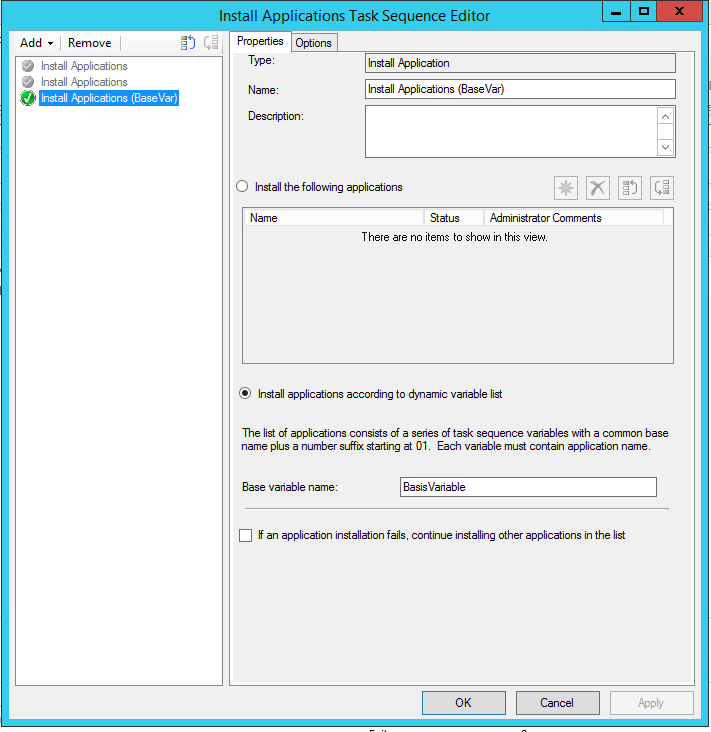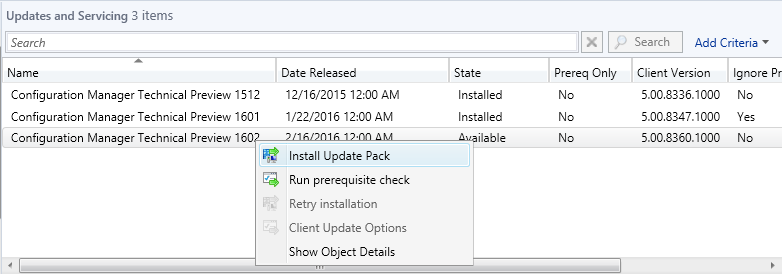Install Pdf Creator Sccm Microsoft
If you have the Adobe Acrobat PDFMaker Office COM Addin add-in installed on your computer and your Office programs are crashing or unespondive, this could mean that the current version that's installed on your computer is incompatible with your version of Office. To check whether the add-in is installed on your computer and you're running Office 2010, open any Office application, and then. Download The FREE PDF Converter and create PDF files from any application with PDF Creator. Best of all, PDF Creator is absolutely free for anyone to use. PDFCreator - Download for free, download pdf printer, pdf writer, pdf maker.
I'm attempting to deploy a batch file that uninstalls Firefox(exe). I've been able to successfully deploy batch files that contain the uninstall string for msi s but I haven't been successful doing this for exe s. The file looks like this: '%programfiles(x86)% mozilla firefox uninstall helper.exe' /S.
When I run the file on the machine it will install Firefox no problem, but when I deploy it SCCM gives me the message ID 10006 which leads me to believe the reason the file isn't running correctly is because of how I'm setting up the package. I've googled this a few times and can't seem to find an exact answer on how to fix this. I was hoping if someone could give me some advice on how to develop my package to deploy this batch file. Hey Rbell253, Here is some sample code from one of my personal batch scripts that I use to install an.EXE (in this case PDFCreator by PDFForge). I commented it heavily for you.
This is an actual 'tested and working' production script that I am currently using in an SCCM 2012-based deployment.
This article describes how to deploy packages for Adobe ® Creative Cloud™ created using Adobe Creative Cloud Packager. This article is applicable for both Adobe Creative Cloud for teams and Adobe Creative Cloud for Enterprise customers.

Install Pdf Creator Free

Note: For application-specific behavior and a list of information and solutions for certain scenarios, see the. Packages created with Adobe Creative Cloud Packager (CCP) contain two top-level folders: Build and Exceptions. Installation of the software and license selection is possible using the file setup.exe in the Build folder for a majority of applications, but there are a small number of applications which are installed using a separate tool in the Exceptions folder, depending on when the package was created and which applications are included within it.
Command line has additional required parameters, for which default values are taken if you run Setup.exe by double-clicking. In the command: ADOBEINSTALLDIR is the installation directory where apps are to be installed on the client machine. INSTALLLANGUAGE is the locale in which the apps are to be installed. Syntax setup -silent -ADOBEINSTALLDIR= -INSTALLLANGUAGE= Syntax example: setup.exe -silent -ADOBEINSTALLDIR='C: InstallDir' -INSTALLLANGUAGE=frCA Location of setup.exe: Package Build. The initial package will contain applications and the most recent updates.
Later when new updates become available you may want to make these available to your users. You can do this in a number of ways. You can use Creative Cloud Packager to create an update-only package by selecting only the updates. You can then deploy this package using your chosen deployment tool. If Remote Update Manager was included in your deployment package (which is the default behavior) you can use your deployment tool of choice to remotely run the Remote Update Manager on the client machine. Updates will run with administrator privileges and come from Adobe Update Server. To save network bandwidth, it is also possible to set up your own internal Adobe Update Server.

Pdf Creator Free
You can use AUSST to set up a server which will host both Windows and Mac Updates. In scenario 2 if you have an internal Adobe Update Server and during package creation chose to use this server, Remote Update Manager will pull updates from your internal server rather than the Adobe server, thus saving much network bandwidth. For more information, see. When you create a package with Adobe Creative Cloud Packager, two folders are created:. The Build folder contains the MSI (Windows) or the PKG (Mac OS) file for deployment with Microsoft SCCM or Apple ARD. The Exceptions folder contains the payloads that must be installed separately.
Install Pdf Creator Sccm Microsoft Free
The content of the folder depends on whether you are installing on Mac OS or on Windows, and whether you have included Adobe ® Acrobat ® as part of the package. Information on installing the products in the Exceptions folder is provided in the article. Information on deploying Acrobat for Windows is provided in the article. You can use the command line to uninstall latest versions of some individual products. For a list of products you can uninstall using the command line and their sapCodes, baseVersions, and platforms, see.
Syntax examples:. Windows: C: Program Files (x86) Adobe Adobe Creative Cloud HDCore Setup.exe -uninstall=1 -sapCode=PHSP -baseVersion=17.0 -platform=win32 -deleteUserPreferences=false. Mac: /Applications/Utilities/Adobe Creative Cloud/HDCore/Setup -uninstall=1 -sapCode=PHSP -baseVersion=17.0 -platform=osx10-64 -deleteUserPreferences=true In the command: uninstall Specify as 1 to uninstall.
sapCode is the sap code of the product to be uninstalled. baseVersion is the base version of the product to be uninstalled. platform is the OS on which of the product to be uninstalled. deleteUserPreferences specify true to delete user preferences on the product to uninstall or false to retain the user preferences. Maxconvert pcsx2 version. Location of setup:.
Windows: Program Files (x86) Adobe Adobe Creative Cloud HDCore Setup.exe. Mac: /Applications/Utilities/Adobe Creative Cloud/HDCore/Setup Error codes If incorrect arguments are passed, error code 103 is returned. If incorrect values are passed in any of the parameters, error code 101 is returned. For information on other error codes, see.